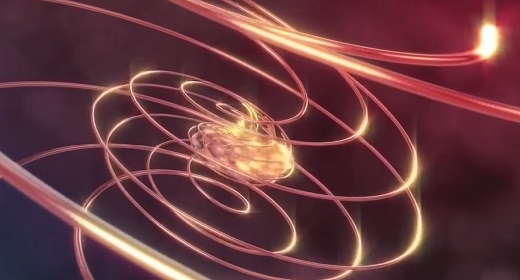Leonardo Bonacci (c. 1175 – c. 1250]—known as Fibonacci (Italian), and Leonardo of Pisa, Leonardo Pisano Bigollo, Leonardo Fibonacci—was an Italian mathematician, considered to be “the most talented Western mathematician of the Middle Ages”…
https://www.youtube.com/watch?v=iEnR8zupK0A&feature=share&fbclid=IwAR1eCfXQoFwwk3Cdk80BiYpId6pSGutEHi4-zRZuAgLqP6J6CSqjzEaBWHw
Fibonacci popularized the Hindu–Arabic numeral system to the Western World primarily through his composition in 1202 of Liber Abaci (Book of Calculation). He also introduced Europe to the sequence of Fibonacci numbers, which he used as an example in Liber Abaci. The Fibonacci sequence is a series of numbers where a number is found by adding up the two numbers before it. Starting with 0 and 1, the sequence goes 0, 1, 1, 2, 3, 5, 8, 13, 21, 34, and so forth.
Written as a rule, the expression is xn = xn-1 + xn-2. Fibonacci numbers were first introduced in his Liber abaci in 1202. The son of a Pisan merchant, Fibonacci traveled widely and traded extensively. Math was incredibly important to those in the trading industry, and his passion for numbers was cultivated in his youth. Knowledge of numbers is said to have first originated in the Hindu-Arabic arithmetic system, which Fibonacci studied while growing up in North Africa. Prior to the publication of Liber abaci, the Latin-speaking world had yet to be introduced to the decimal number system. He wrote many books about geometry, commercial arithmetic and irrational numbers. He also helped develop the concept of zero.
Fibonacci numbers actually appear in nature, from sunflowers to hurricanes to galaxies. Sunflower seeds, for example, are arranged in a Fibonacci spiral, keeping the seeds uniformly distributed no matter how large the seed head may be. A Fibonacci spiral is a series of connected quarter-circles drawn inside an array of squares with Fibonacci numbers for dimensions.
The squares fit perfectly together because of the nature of the sequence, where the next number is equal to the sum of the two before it. Any two successive Fibonacci numbers have a ratio very close to the Golden Ratio, which is roughly 1.618034. The larger the pair of Fibonacci numbers, the closer the approximation. The spiral and resulting rectangle are known as the Golden Rectangle.
The Golden Ratio is denoted by the Greek letter phi. Greek architects used the ratio 1:phi as an integral part of their designs, including the Parthenon in Athens. Though this was not consciously used by Greeks or artists, the Golden Rectangle does appear in the Mona Lisa and other Renaissance art works. Phi is also the ratio of the side of a regular pentagon to its diagonal. The resulting pentagram forms a star, which is the star seen on many flags.















































